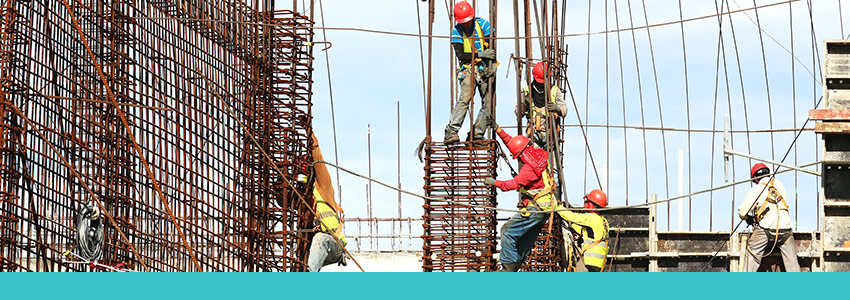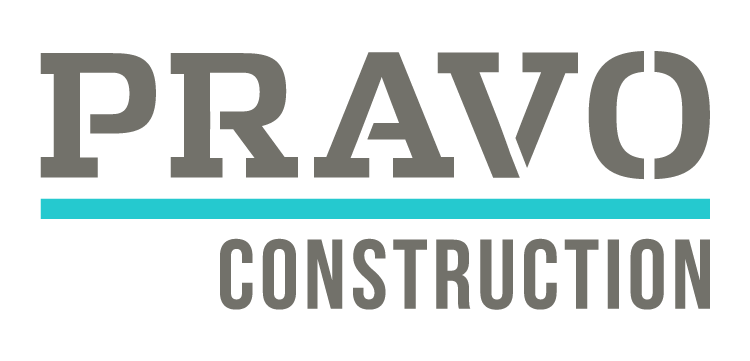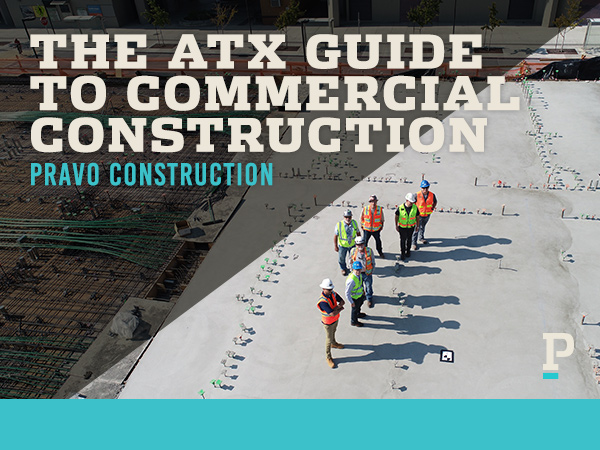The Commercial Construction Process Explained
by Aaron Fichera
Commercial construction projects in Austin can be complex and daunting for clients, but with the proper planning and guidance, it can be a smooth and rewarding process for all parties. In this Pravo guide, we will take you through the high-level commercial construction process, from the initial planning stages to the final walk-through.
Pre-Construction Planning
The pre-construction planning stage is critical to the success of any commercial construction project. How you start the project is a good indication how the rest of the duration will go. During this phase, clients should work closely with their construction team (broker, architecture, engineer and general contractor) to establish project goals, timelines, budgets, and any other specific requirements. Having everyone on the same and communicating regularly is essential to success!
At this stage, the following steps need to be taken:
- Site Selection and Evaluation: Clients should evaluate potential sites and choose one that is suitable for their needs and the needs of their staff and/or clients. They should also assess the site’s environmental impact and obtain any necessary permits.
- Conceptual Design: The conceptual design phase involves creating a preliminary design that outlines the project’s overall look and function. The client should work closely with the design team to ensure that the design meets their needs and budget.
- Preliminary Budget and Schedule: A preliminary budget and schedule should be established based on the conceptual design. This will give the client an idea of the costs and timeline associated with the project.
- Existing Conditions: Existing Conditions is conducted to determine whether the project is viable from an economic, technical, and legal perspective. This will help the client make an informed decision about whether to move forward with the project, as well as look for areas that budget or timeline can be improved.

Construction Phase
Once the pre-construction stage is complete, the fun part begins with the construction phase! During this phase, the client’s construction team will take the lead and manage the day-to-day construction activities. The following steps are taken:
- Procurement and Contracting: The construction team will procure the necessary materials and hire contractors to work on the project. Contracts will be signed with each contractor, outlining their scope of work, timeline, and payment terms. This is where having expertise and strong contractor relationships can make or break a project.
- Construction: The construction phase involves the actual building of the project. The construction team will manage all aspects of the construction process, including site preparation, foundation work, framing, electrical, plumbing, and finishing work. During the construction process, the construction team will lead weekly OAC meetings to make sure project is hitting milestones and all parties in the know.
- Quality Control: Quality control measures should be put in place to ensure that the project meets the client’s requirements and industry standards. Inspections and testing should be carried out at every stage of the construction process.
- Project Management: Project management involves overseeing the construction process, coordinating with contractors, and ensuring that the project is completed on time and within budget. Regular progress reports and updates should be provided to the client.

Post-Construction Phase
Once the construction phase is complete, then we are the final stretch and move-in date. During this phase, the client’s construction team will conduct a final walk-through and hand over the completed project to the client. The following steps are taken:
- Final Walk-Through: A final walk-through is conducted to ensure that the project meets the client’s requirements and industry standards. Any issues or deficiencies are addressed before the project is handed over to the client.
- Certificate of Occupancy: Occupancy involves testing and verifying that all systems are working correctly and that the space is ready for occupancy. The client will be given a certificate of occupancy once the building is deemed safe and compliant.
- Move-In: Finally you and your team are in a completed project!
Best Practices for Clients Starting a Commercial Construction Project
- Hire a reputable construction team: It is essential to work with a reputable construction team with experience in commercial construction projects and understandings the local landscape and permitting processes. The team should have the necessary skills, knowledge, and resources to deliver a successful project.
- Establish clear communication: Effective communication is critical to the success of any commercial construction project. The client should establish clear communication channels with their construction team and ensure that they are kept informed throughout the project.
- Set realistic expectations: Clients should set realistic expectations for their project in terms of budget, timeline, and scope of work. This will help avoid delays and additional costs down the line. If needing to adjust, the construction team can perform value engineering exercises to realign expectations on budget and timelines.
- Plan for contingencies: Commercial construction projects are often subject to unforeseen circumstances, such as weather events or supply chain disruptions. Clients should plan for contingencies and have a contingency budget in place to address any unexpected costs. Don’t always take the lowest bid and expect they are giving a holistic view of the project!
- Ensure compliance with regulations: Clients should ensure that their project complies with all local regulations and codes. This includes obtaining permits and approvals from local authorities and ensuring that the project meets all safety and environmental requirements.
- Review progress reports regularly: Clients should review progress reports regularly to ensure that the project is on track and within budget. This will help identify any issues early on and allow for corrective action to be taken.

Commercial construction projects in Austin, TX and Central Texas can be complex and challenging, but with proper planning and guidance, they can be successful and rewarding for clients who are looking to expand to a new location or entering into a space for the first time. By following the Pravo steps outlined in this guide and implementing best practices, clients can ensure that their project is delivered on time, within budget, and to their satisfaction. It is important to work with a reputable construction team, set realistic expectations, plan for contingencies, ensure compliance with regulations, and review progress reports regularly. With these steps in place, clients can achieve their commercial construction goals and enjoy a successful project outcome.

